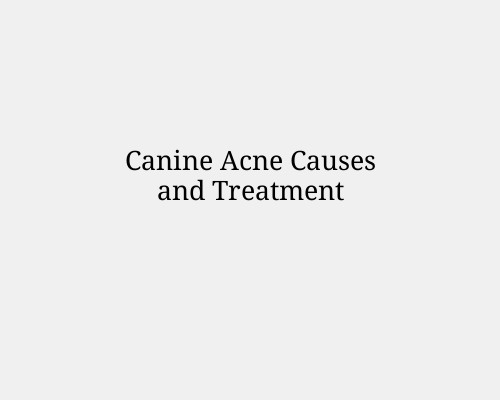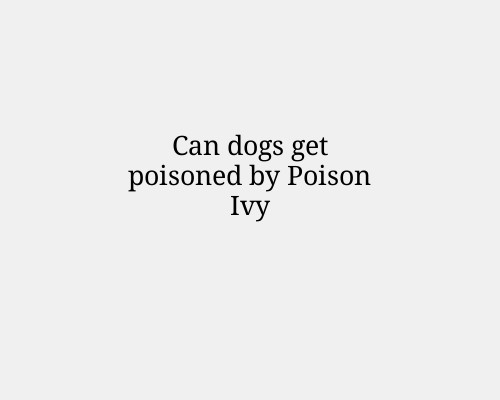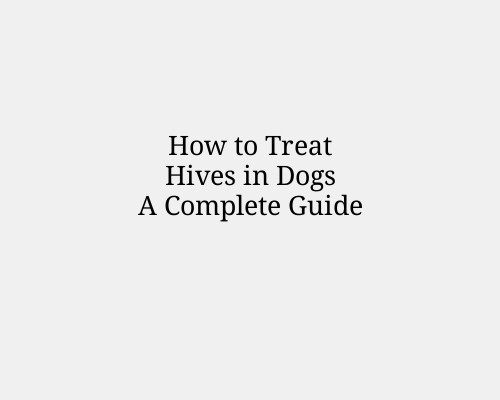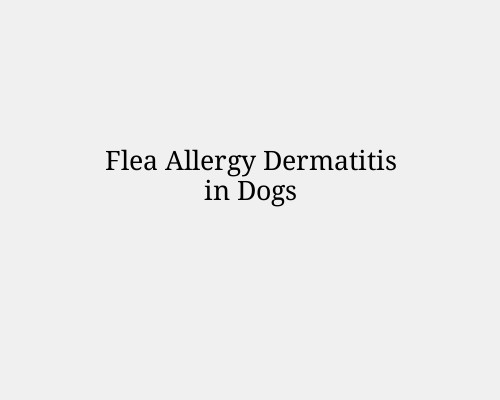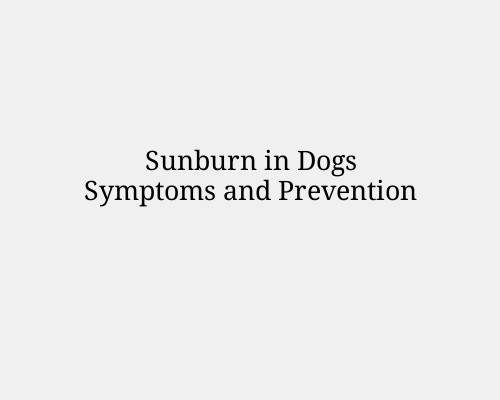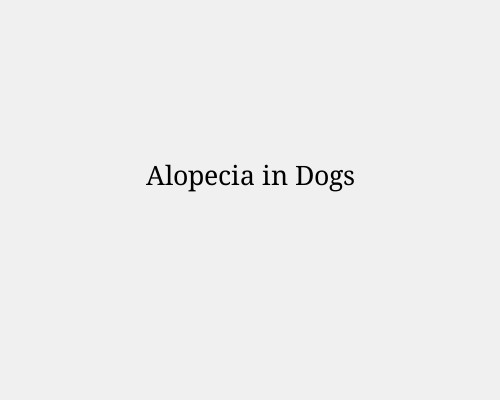Canine Acne Causes and Treatment
Canine Acne: Causes and Treatment
Canine acne is a common skin condition that affects dogs, especially young or short-haired breeds. It typically appears as small, red bumps or pustules around the dog’s muzzle, lips, and chin. While generally mild, untreated canine acne can cause discomfort and even lead to infections. Understanding the causes and treatment options is essential for ensuring your dog’s skin stays healthy.
![]()
Causes of Canine Acne
Several factors can contribute to the development of acne in dogs:
Hormonal Changes
Hormonal changes in adolescent dogs (typically under one year of age) are one of the most common triggers for canine acne. This is similar to how humans often develop acne during puberty.
Genetic Predisposition
Some breeds are more prone to developing acne, particularly short-haired breeds such as Boxers, Bulldogs, Dobermans, and Rottweilers.
Trauma to the Skin
Injury or friction, such as from rubbing against hard surfaces, can irritate the hair follicles around the muzzle and lead to acne. Persistent rubbing may worsen the condition.
Allergies
Food or environmental allergies can trigger skin inflammation and acne outbreaks. Identifying and managing the underlying allergy is crucial to prevent recurrence.
Bacterial Infections
Bacteria trapped in hair follicles can cause pustules, leading to infections if not treated promptly.
Poor Hygiene
Dogs that tend to have dirt, food residue, or excess oil around their muzzle may develop clogged hair follicles, resulting in acne.
Immune System Deficiencies
A weakened or compromised immune system may increase the likelihood of developing acne and other skin conditions.

Symptoms of Canine Acne
Common signs of canine acne include:
Red bumps or pustules (pus-filled bumps) around the lips, chin, or muzzle
Swelling or inflammation in the affected area
Crusting or scabbing over the pustules
Hair loss around the affected area
Itching, rubbing, or pawing at the face
Pain or sensitivity when touched
Severe cases may develop into deep infections or abscesses, which require prompt medical attention.
![]()
Diagnosing Canine Acne
Veterinarians can typically diagnose canine acne through a physical examination. In some cases, they may recommend further testing (e.g., skin scrapings, bacterial cultures, or biopsies) to rule out other skin conditions such as mange, ringworm, or a bacterial skin infection.
![]()
Treatment Options for Canine Acne
Treatment depends on the severity of the acne. Mild cases often resolve on their own, but more persistent or severe cases may require medical intervention.
Topical Treatments
Benzoyl Peroxide: A dog-safe version of this common acne treatment helps clean hair follicles, reduce inflammation, and kill bacteria. It may be prescribed as a gel or shampoo.
Antiseptic Wipes or Solutions: Chlorhexidine-based wipes or rinses can help cleanse the skin and prevent bacterial infections.
Medicated Shampoos: Regular use of antiseptic or anti-inflammatory shampoos may help manage acne outbreaks.
Oral Medications
Antibiotics: For dogs with severe or infected acne, a veterinarian may prescribe oral antibiotics to control bacterial infections.
Steroids: In cases with significant inflammation, corticosteroids may be used to reduce swelling and discomfort.
Dietary Adjustments
If allergies are contributing to acne, switching to a hypoallergenic diet or eliminating certain ingredients may help reduce skin flare-ups.
Warm Compresses
Applying a warm, damp compress to the affected area may help reduce swelling and encourage drainage of clogged follicles. This should be done gently to avoid further irritation.
Avoid Irritants
Prevent your dog from rubbing its face on rough surfaces, and avoid using harsh grooming products that could worsen irritation.

Home Care Tips
Maintaining good hygiene is key to preventing canine acne and reducing the risk of recurrence:
Clean the Face Regularly: Wipe your dog’s face after meals to remove food debris and excess oils.
Use Non-Comedogenic Products: Stick to gentle, non-clogging shampoos and cleansers specifically designed for dogs.
Prevent Trauma: Discourage your dog from rubbing or scratching the affected area.
Avoid Squeezing Pimples: Never pop or squeeze pustules, as this can worsen inflammation and lead to infections.
Manage Allergies: Work with your veterinarian to identify and manage any underlying allergies.

When to See a Veterinarian
While mild cases of canine acne can be managed at home, it’s essential to seek veterinary attention if:
The acne doesn’t improve or worsens after treatment
You notice signs of pain, swelling, or deep infection
There is excessive itching or discomfort
Veterinarians can provide more advanced treatments to control severe cases and prevent complications.
![]()
Conclusion
Canine acne may be a common condition, but it should not be ignored. Early intervention and proper hygiene can often prevent it from becoming a more serious issue. By understanding the causes and available treatments, pet owners can help keep their dog’s skin healthy and comfortable. If you’re ever unsure about how to manage your dog’s acne, consult with your veterinarian for personalized care.

